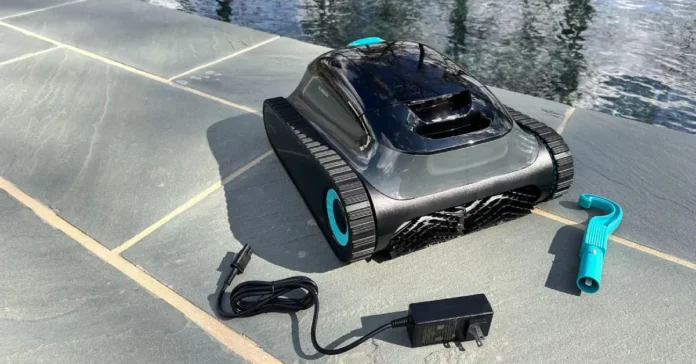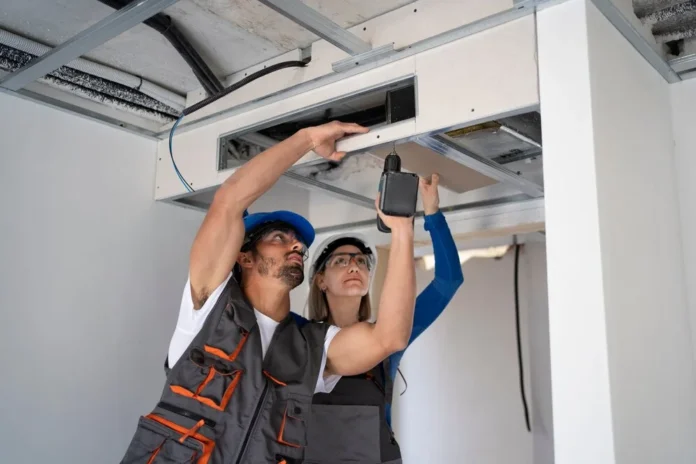If you have a swimming pool, a robot pool cleaner is one of the simplest ways to keep the water shimmering clear. But perhaps one of the most common is: how many hours a day should I run my pool cleaner? Knowing the ideal time to run can be a way to clean better with less power.
How Robotic Pool Cleaners Work?
Robotic pool cleaners are designed to operate independently from the pool’s filtration system. They are low-voltage and work by filtering your pool water into the cleaner’s system. The runtime depends on your pool’s size, how much debris ends up in the water, and which model you’re using— for example, a robotic vacuum like the Beatbot AquaSense 2 Ultra or a more basic vacuum.
For most pools, running it 2–4 hours a day should be enough. If your pool collects lots of leaves or algae, you may need 6+ hours or multiple runs. Top-tier models like the AquaSense 2 Ultra include mapping technology, so they won’t run extra cycles you don’t need. Newer models like the Beatbot AquaSense 2 Pro and the Beatbot AquaSense 2 will sometimes have smart navigation and will calculate the most efficient way to clean your pool without running cycles longer than necessary.
A big portion of users pair their robot pool cleaner with another helper, such as a skimmer or a wall-climbing pool cleaner, for complete pool cleaning. For instance, a skimmer can quickly scoop up surface leaves while the robotic pool cleaner takes care of floor debris.
Maintenance Tips for Best Performance
You should check the condition of the water and clean out filters regularly for your pool vacuum cleaner. If you see algae growing or a lot of dirt accumulation, you may need to either increase the runtime or learn how to acid wash pool walls for better results.
Knowing how a pool booster pump works can improve circulation, especially with low-flow robotic cleaners. Booster pumps can add up to 50 GPM (gallons per minute) to your suction line.
If you’re shopping brands, Maytronics (maker of Dolphin cleaners) lets you set different run times—check the manufacturer’s guidelines to get the most out of your robot. Checking out the manufacturer’s guidelines will make sure you’re using your pool vacuum robot to the best of its abilities.
Is a Robotic Pool Cleaner Worth It?
A robotic pool cleaner can save you time and effort. Instead of spending hours scooping debris or scrubbing the floor, you just set up the robot and let it work. It usually cleans faster and more thoroughly than manual methods. Over time, it can help keep your pool water clear and cut down on the chemicals you need. For many pool owners, the convenience and better cleaning make a robot cleaner worth the cost.
What Is the Best Robotic Pool Cleaner to Buy?
There isn’t one single “best” model for everyone. It depends on how big your pool is, how much debris you have, and your budget. Here are a few options that often rank high:
- Beatbot AquaSense 2 Ultra: Cleans fast and uses mapping technology to cover the whole pool without missing spots.
- Beatbot AquaSense 2 Pro: Good for medium-sized pools and has smart navigation to avoid extra cleaning cycles.
- Dolphin Nautilus: Affordable for small to medium pools. It has a simple filter system and is easy to use.
- Polaris F9450: Works well in larger or very dirty pools. It has strong suction and scrubs walls and floors.
Before choosing, think about your pool’s shape, size, and how much debris falls in. Compare features like run time, filter type, and how easy it is to clean the robot itself.
What Are the Disadvantages of Robotic Pool Cleaners?
Even though robotic cleaners have many perks, there are a few downsides:
- Initial Cost: They usually cost more up front than a basic vacuum or manual tools.
- Maintenance: You need to empty and clean their filter canister often. If you skip this, the robot can lose suction or work less effectively.
- Storage Space: The cleaner and its power cord can take up room in your garage or shed.
- Tangles and Snags: Long power cords can get caught on pool steps or obstacles, pausing the robot until you free it.
- Not Ideal for Very Large Debris: If your pool gets lots of large leaves or sticks, a robotic cleaner might need extra help from a skimmer or leaf net first.
Do Robotic Pool Cleaners Use a Lot of Electricity?
Robotic pool cleaners run on low voltage, so they use much less power than a full pool pump. Here’s what to know:
- Energy Use: Most robots draw 50–200 watts, while a main pool pump runs 1,500–3,000 watts.
- Cost Estimate: At $0.10/kWh, a 150-watt robot running 3 hours uses 0.45 kWh, costing about $0.05—less than a dime daily.
- Smart Scheduling: Many models let you set a timer so the robot only runs when needed. This helps avoid wasting power.
Overall, robotic cleaners are energy-efficient. You get cleaner water without driving up your electric bill too much.
Wrapping Up
To wrap up, you can run your robot pool cleaner a couple of hours per day (2 to 4 hours), and your swimming pool will remain clean and healthy. Varying runtimes based on debris amount and pool size, hassle-free options, premium fast options for: Beatbot AquaSense 2 Ultra, Beatbot AquaSense 2 Pro, and Beatbot AquaSense 2, for optimal cleaning cycles. This is the best way to get a vacuum that uses the pool system for cleaning your pool while using as little power as possible.



